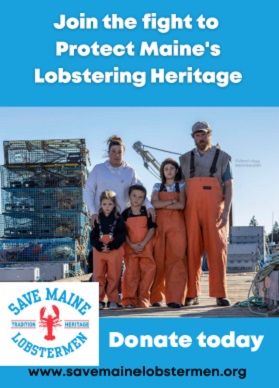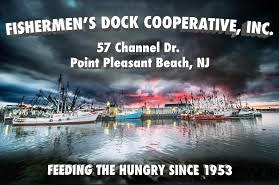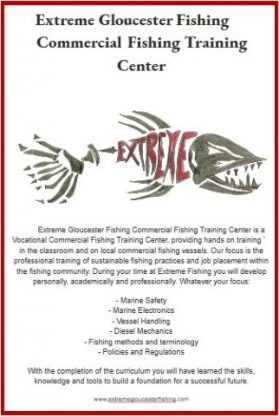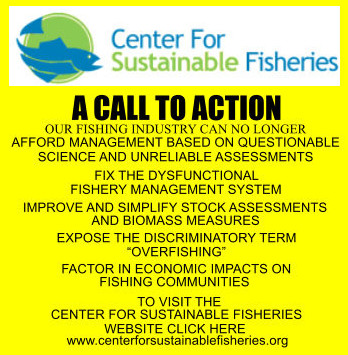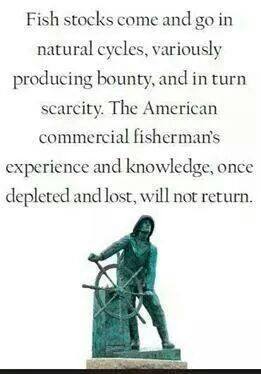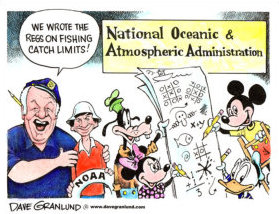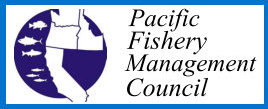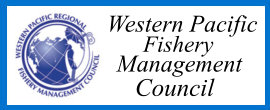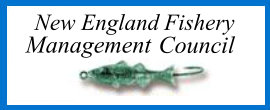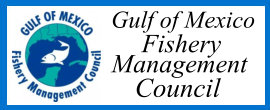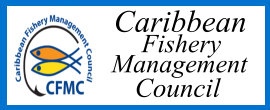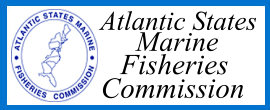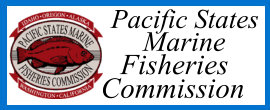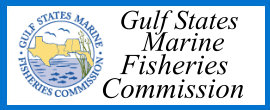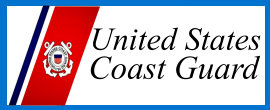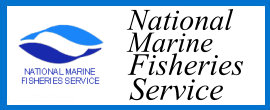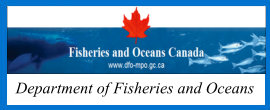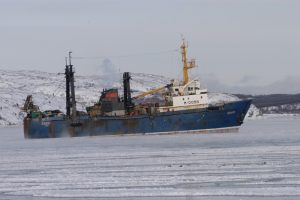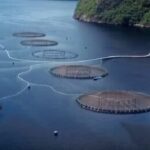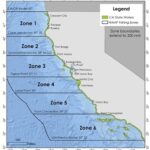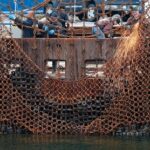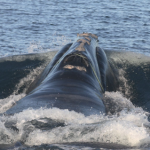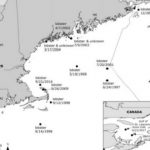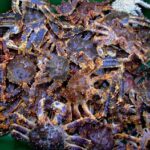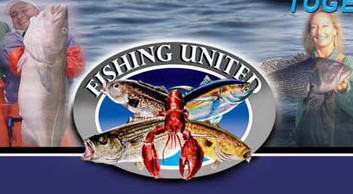Tag Archives: Great South Channel
2024 Sea Scallop Survey Results – Long-Running Sea Scallop Survey Diversifies for the Future
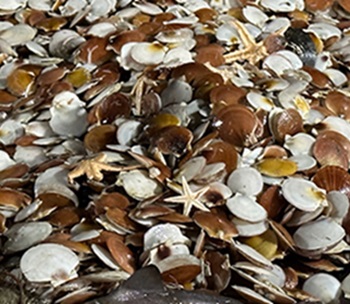 Among the highlights of our 2024 Integrated Sea Scallop and HabCam Research Survey are strong numbers of two-year-old scallops observed in both dredge samples and HabCam images. These were found in the southern part of the Great South Channel, the eastern portion of the Nantucket Lightship Area, the northern portion of Closed Area I, and in the Elephant Trunk and Hudson Canyon South areas in the Mid-Atlantic. Sea scallops typically reach harvestable size at about age 4 and older. This is also the first survey that included three cruises, exclusively used a commercial vessel for dredging, and deployed a long-range autonomous underwater vehicle (LRAUV). Photos, charts, more, >>CLICK TO READ<< 10:06
Among the highlights of our 2024 Integrated Sea Scallop and HabCam Research Survey are strong numbers of two-year-old scallops observed in both dredge samples and HabCam images. These were found in the southern part of the Great South Channel, the eastern portion of the Nantucket Lightship Area, the northern portion of Closed Area I, and in the Elephant Trunk and Hudson Canyon South areas in the Mid-Atlantic. Sea scallops typically reach harvestable size at about age 4 and older. This is also the first survey that included three cruises, exclusively used a commercial vessel for dredging, and deployed a long-range autonomous underwater vehicle (LRAUV). Photos, charts, more, >>CLICK TO READ<< 10:06
Long-Running Sea Scallop Survey Diversifies for the Future – >>CLICK TO READ<<
Lobster’s nightmare: Vicious Atlantic wolffish is one scary catch in the Gulf of Maine
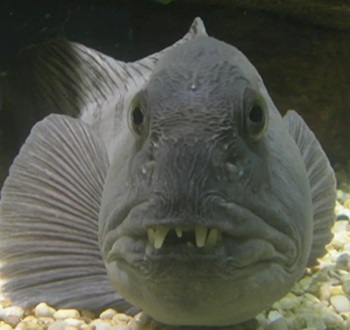 Atlantic wolffish are vicious looking. Their head is huge with gaping teeth that protrude from their lips both top and bottom, giving them a severe overbite. Their tail is tapered with long dorsal and anal fins, which give it a look of an eel. Beware to anyone trying to get a hook out of their mouth! These fish enjoy cold water and can be found throughout the Gulf of Maine to Labrador and down to the Great South Channel of Georges Bank in New England. Amazingly, they can survive in some of the coldest water by producing “antifreeze” proteins stored in their blood and livers. This keeps their blood from freezing under extreme conditions. Around age 5-6, they reach maturity and begin mating. It appears that wolffish are solitary animals except during the mating season, according to NOAA, which occurs in the Gulf of Maine during the fall. The wolffish find mates and remain together until the female lays her eggs. Lobsters beware! The teeth of the wolffish allow them to eat and crush almost anything they want, and what they want are lobsters. They have several rows of very sharp teeth. My husband, always a biologist, when he was fishing commercially regularly dissected the fish he caught to see what they had been eating. Twenty years ago, he opened a 20-pound wolffish and found 21 lobster tails and more body parts in its stomach! more, >>CLICK TO READ<< 14:20
Atlantic wolffish are vicious looking. Their head is huge with gaping teeth that protrude from their lips both top and bottom, giving them a severe overbite. Their tail is tapered with long dorsal and anal fins, which give it a look of an eel. Beware to anyone trying to get a hook out of their mouth! These fish enjoy cold water and can be found throughout the Gulf of Maine to Labrador and down to the Great South Channel of Georges Bank in New England. Amazingly, they can survive in some of the coldest water by producing “antifreeze” proteins stored in their blood and livers. This keeps their blood from freezing under extreme conditions. Around age 5-6, they reach maturity and begin mating. It appears that wolffish are solitary animals except during the mating season, according to NOAA, which occurs in the Gulf of Maine during the fall. The wolffish find mates and remain together until the female lays her eggs. Lobsters beware! The teeth of the wolffish allow them to eat and crush almost anything they want, and what they want are lobsters. They have several rows of very sharp teeth. My husband, always a biologist, when he was fishing commercially regularly dissected the fish he caught to see what they had been eating. Twenty years ago, he opened a 20-pound wolffish and found 21 lobster tails and more body parts in its stomach! more, >>CLICK TO READ<< 14:20
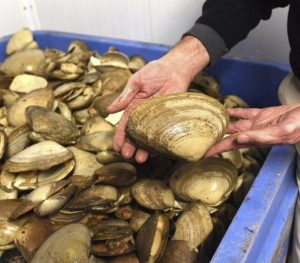
Fishermen backing surf clammers in fight over harvest area
Groundfish stakeholders are supporting the surf clam industry’s efforts to retain fishing rights in pockets of the Great South Channel of the Nantucket Shoals as long as the approved management policy does not prompt “mitigations or further habitat restrictions on the groundfish fishery.”,,, On Tuesday, the New England Fishery Management Council, meeting in Newport, Rhode Island, is expected to decide whether one of the more lucrative fishing grounds for the surf clam fishery — 10 to 20 miles east and southeast of Nantucket — will remain open to surf clamming or restricted or closed as part of a protectionist effort to designate the full area as an essential fish habitat that would be off limits to surf clamming dredging gear. >click to read<06:55
NEFMC Approve Some Habitat Changes – blocks no-fishing zone for scientific research on Stellwagen Bank
Federal fishery regulators say they will keep much-debated protections for Cashes Ledge in the 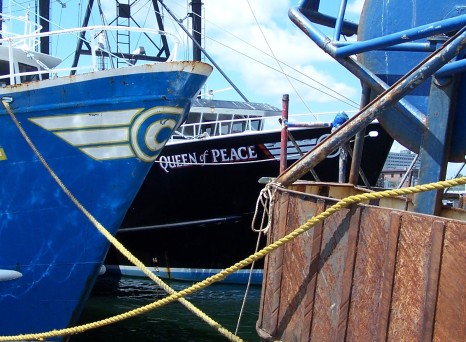 in place as part of a broad effort to alter the scope of New England’s fishing grounds. Peter Baker, director of northeast U.S. Oceans for Pew Charitable Trusts, said that with the recent approvals, the council remains “on a course to eliminate thousands of square miles of important fish habitat areas” in favor of commercial fishing concerns. He said the council has ignored conservationists’ (shrugs shoulders),,, Read the rest here 20:48
in place as part of a broad effort to alter the scope of New England’s fishing grounds. Peter Baker, director of northeast U.S. Oceans for Pew Charitable Trusts, said that with the recent approvals, the council remains “on a course to eliminate thousands of square miles of important fish habitat areas” in favor of commercial fishing concerns. He said the council has ignored conservationists’ (shrugs shoulders),,, Read the rest here 20:48
Cape Cod scallop fleet cries foul
Much of the best fishing terrain lies in and around the Great South Channel that separates Georges Bank from the mainland, and north in the Gulf of Maine, according to the council’s habitat study, and is listed as a likely site for closure or restrictions. Requiring these new habitat protection zones could be considered as an ecological trade-off for allowing fishermen access to areas currently closed to most fishing, according to the council. http://www.capecodonline.com/apps/pbcs.dll/article?AID=/20121115/NEWS/211150334









